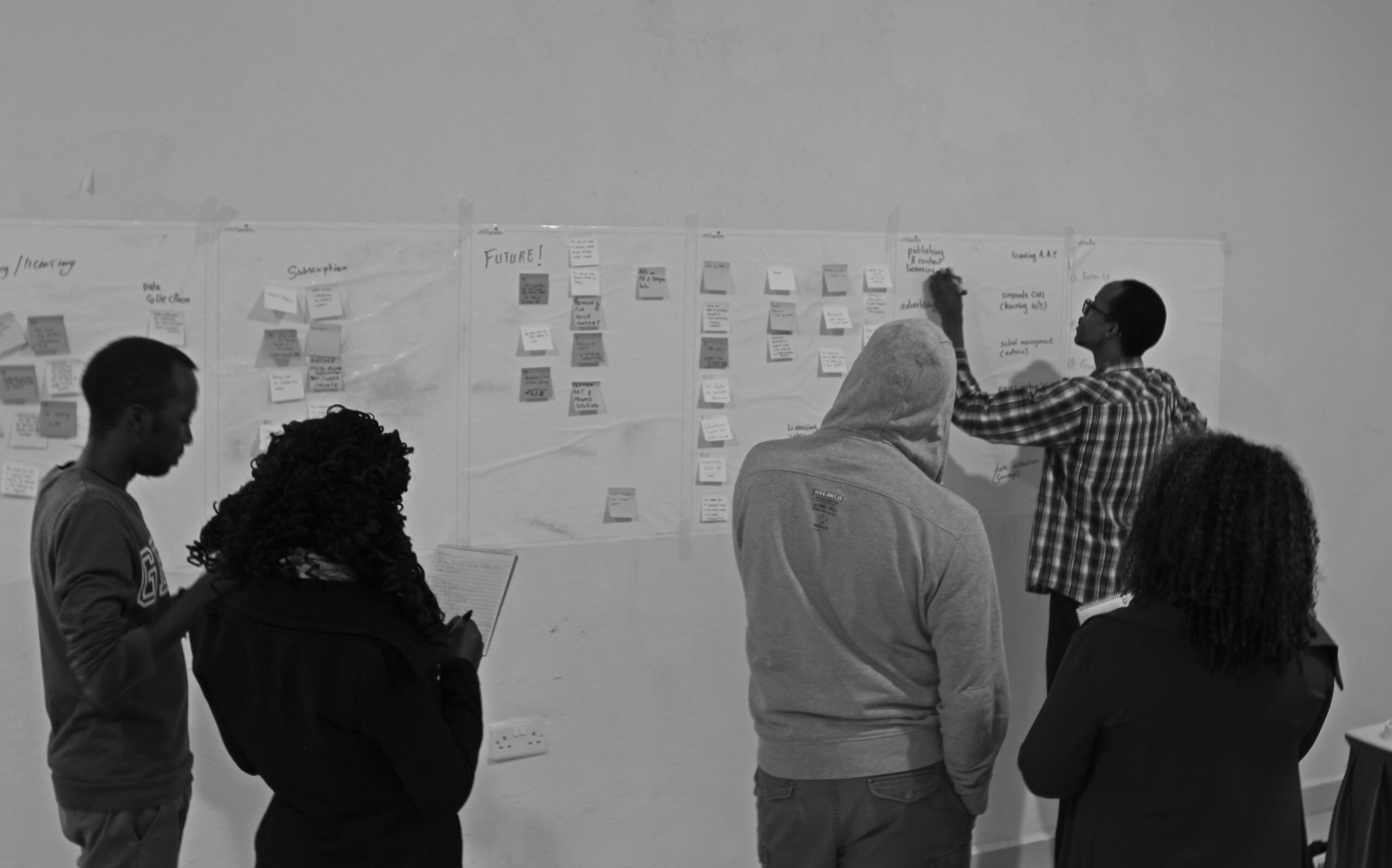- A clear and compelling product vision, strategy, and roadmap
- A plan for how we collect and make use of data
- A focus on user experience
- A proper team set up to ensure we work together well
Two weeks ago, we had traveled to the beautiful Lake Elementaita to conduct a highly customized design sprint (not a design sprint by the classic definition) to think through our product vision, strategy, and roadmap.
A Design Sprint is a 5-day prototyping process that lets you test your product with real users before you’ve spent a penny on building anything.
We didn’t do the five days; we only needed two days for the vision and strategy. Additionally, we went through cycles of the sprint activities differently to suit our objectives. To learn more about design sprints and how you can use them your company check out Google’s Design Sprint Kit and/or read the Sprint Stories.
In this post, I will share how we structured the two days and what we were able to achieve.
Broadly, you need to do the following to run a successful sprint:
- Identify a big/key challenge
- Get the right people in the room
- Schedule uninterrupted days and find the right room
Step 1: Identify a big challenge
Our worry as Eneza was that if we weren’t careful we would quickly turn into feature factory trying to satisfy every client or user need. This is a real danger for many start-ups as it is quite hard to say no to money. Chasing any money doesn’t work out in the long run, though.
A good way to tackle this challenge is by having a clear, compelling and well-communicated product vision, strategy, and roadmap. We didn’t have our product vision and strategy written down on paper and individual team members each had their own idea of the same.
For our challenge, we chose to work on our product vision and strategy.
Step 2: Get the right people in the room
To make achieve the most, as the product manager and facilitator, I had to ensure we had the right people in the room. Our sprint had eight people (not an arbitrary number).
- Kago Kagichiri, our CEO, was The Decider a.k.a The Green Dot (internal joke
)
- Millicent Mwendwa, our Chief B.D. Officer, was our business development expert
- Our CTO, Moses Mutuku, was our technical expert
- Our board chair, Stephen Haggard, was our education expert
- David Njonjo, our VP of Finance, was our finance expert
- David Henia, our Lead Developer, joined to add a different perspective
- Polly Okaron, our Quality Assurance Lead, joined to add a different perspective
- I was there as the facilitator and the product expert
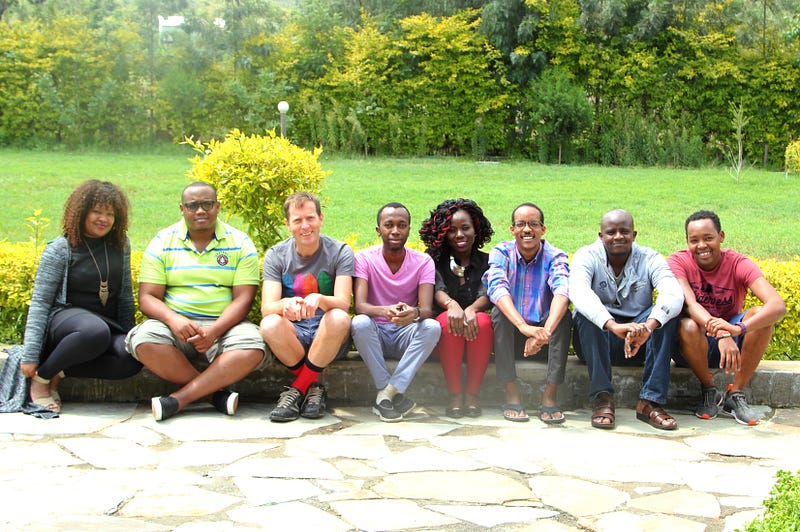
In addition to being experts in different fields, our experts also contributed to conversations outside their areas of expertise allowing us to get different viewpoints.
Step 3: Schedule uninterrupted days and find the right room
We blocked off two full days (5th and 6th of July) to work on this. To minimize interruptions we went offsite (our Ops team — Lina and Michelle — made this possible). To maximize the available time we traveled to L. Elementaita on the 4th of July. Our days were structured as shown below.

The lodge we chose had a great conference room with plenty of lighting and space.
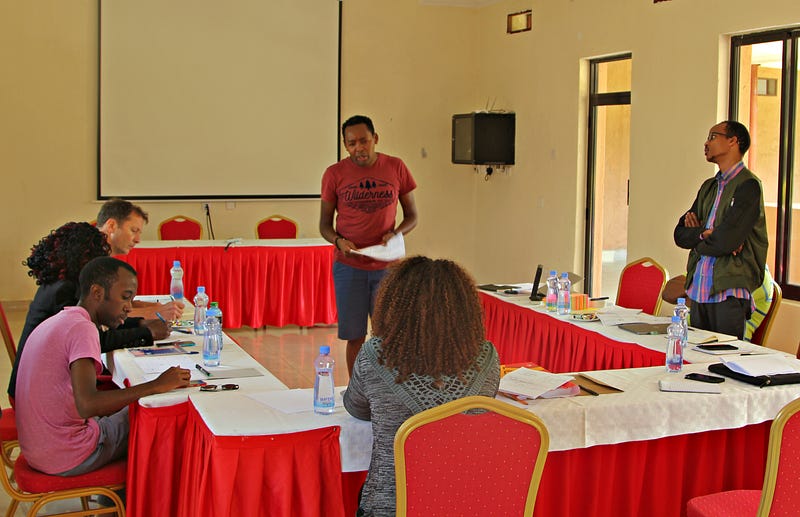
Ready, set, go!
With the above in place, there was just one more item — supplies. Before heading out for the session I made sure I had the following items:
- Plenty of whiteboard marker pens
- Regular voting dots
- Supervote voting dots
- Urgent voting dots
- Paper mate felt pens
- Plenty of sticky notes
- A stack of foolscaps
- The sprint clock (thanks Kenneth M Kinyanjui for lending me your clock)
- Peel & stick dry erase whiteboard — this came in handy as the lodge had no whiteboard
- Plenty of snacks to keep the energy levels high
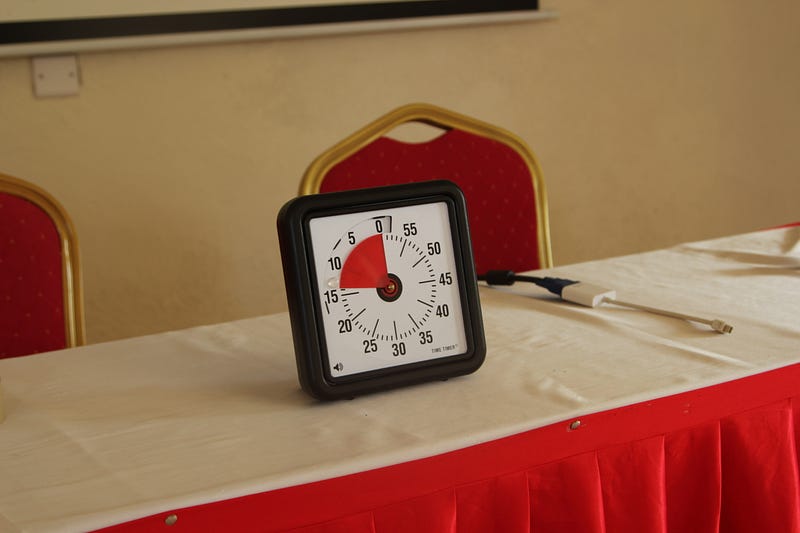
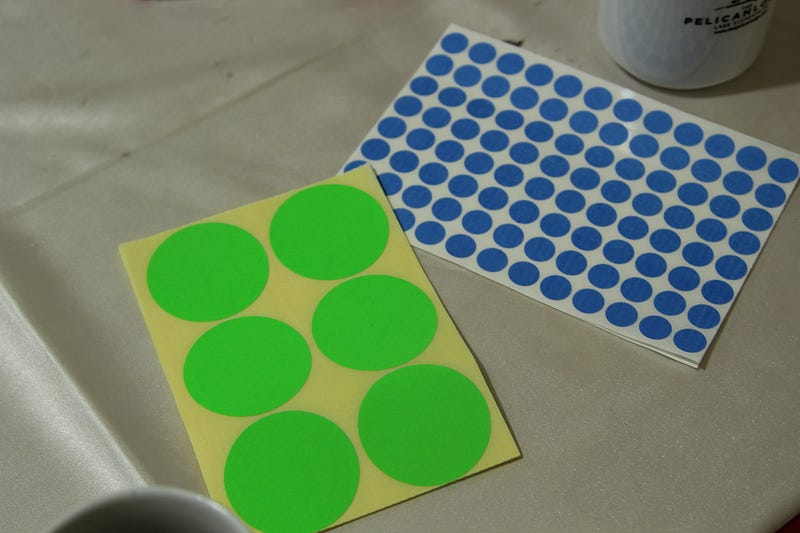
The Process
To ensure our conversation was directed and the output was clear, I chose to use Roman Pichler’s Product Vision Board as our guide and key output.

Our goal was to fill each part of the canvas before heading back to Nairobi.
A typical design sprint looks as depicted below:
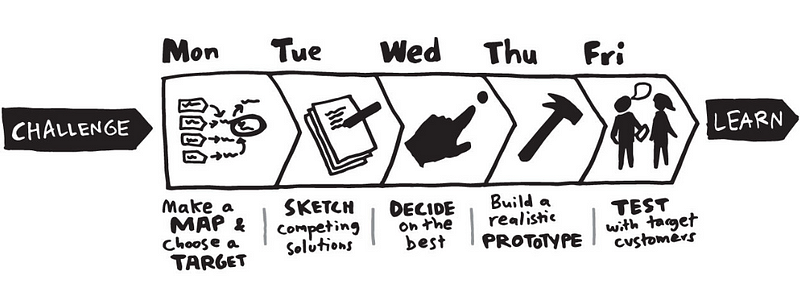
The key modification we made was that we cycled through the sketching and deciding in shorter cycles. Additionally, for the challenge, we couldn’t build a prototype or test it quickly as the output was of a different nature.
Step 1: Sketch competing solutions
For each item on the vision board, we first started by sketching/writing competing solutions individually. I allocated five minutes for these types of exercises.
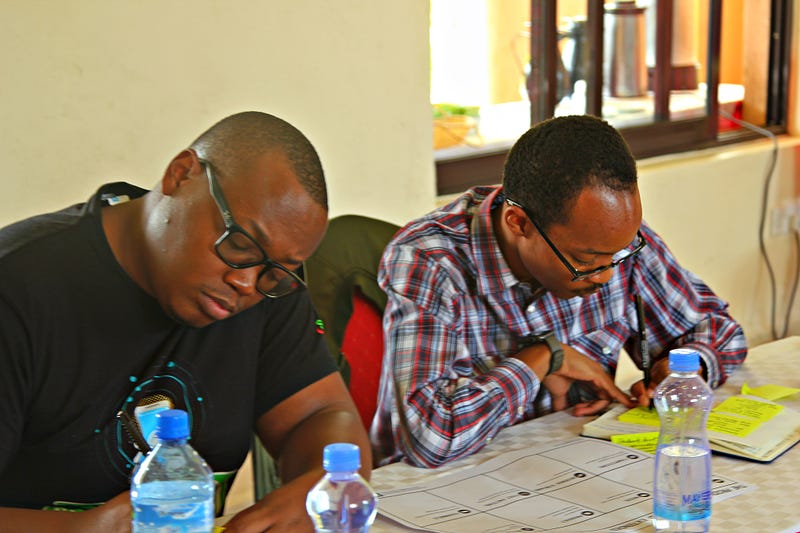
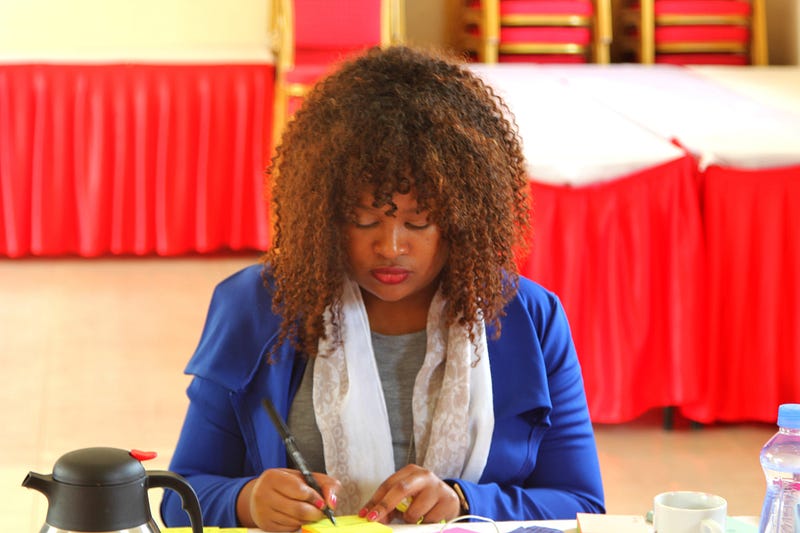
Step 2: Decide
Once we got all the sticky notes on the board (referred to as the art museum in design sprints) I took the lead on clustering common themes. We realized that as a team we were quite aligned as we had a lot of recurring themes.
The next step was to get a feeling where we were generally leaning towards as the ideas at this point are still many. To quickly get this done, based on the number of ideas, each participant got two or three voting dots. Each person would then vote for any idea and could even use all the three on one idea. This is referred to as heat maps in design sprints.
If the number of ideas was still many after the heat map exercise, I would give each participant one voting dot to use to express the one thing they felt strongly about. This is referred to a straw poll. After voting the participants would quickly pitch their choice to the team and after all the pitches 30 seconds would be given for participants to decide whether to change their vote or not. This allowed us to quickly narrow down on ideas.
Even after the straw poll we still had a couple of ideas on the whiteboard. At this point, the logical step would be to get the supervote to help us decide. This is where the Decider made the final decision using a big green voting dot we had set aside. For some sections, we automatically went for this approach and were able to quickly decide what to go with. However, for some, it wasn’t this easy.
Still stuck? Try Break-out discussions
In certain sections, we broke out into smaller groups instead of going directly for the straw poll. This happened two times on the first day. The first instance was when we were going thinking through our target group. The sketching and heat map exercises generated a lot of ideas that we couldn’t simply vote on. Instead of relying solely on our business development expert (Millicent) we broke into two separate groups to discuss this.
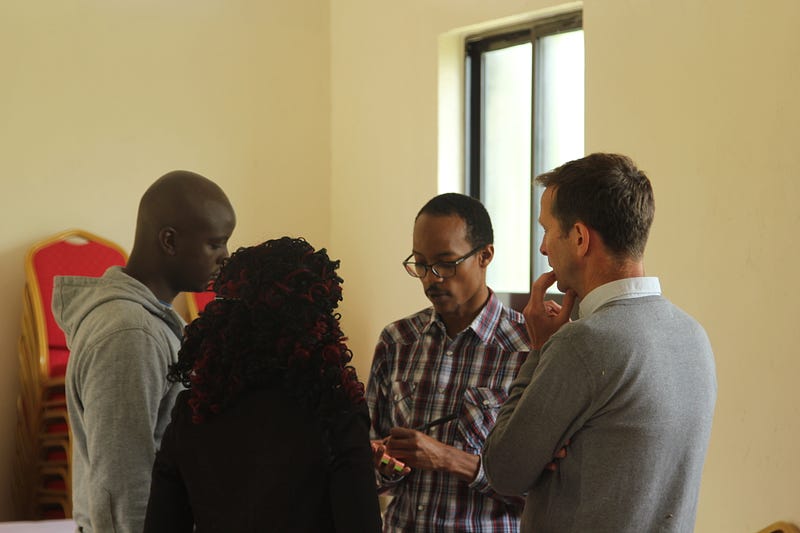
The discussions only took 7 minutes and each group then pitched to the other. Once that was done, we had a straw poll and arrived at a conclusion.
The second time we broke into smaller groups was when we were discussing what our product is. We had four compelling products but we wanted to narrow down our offering. For this exercise, we broke into four groups of two. Each group had to think through a product offering and pitch it the next day to the team. Instead of an open conversation, each group created a product vision board for their product.
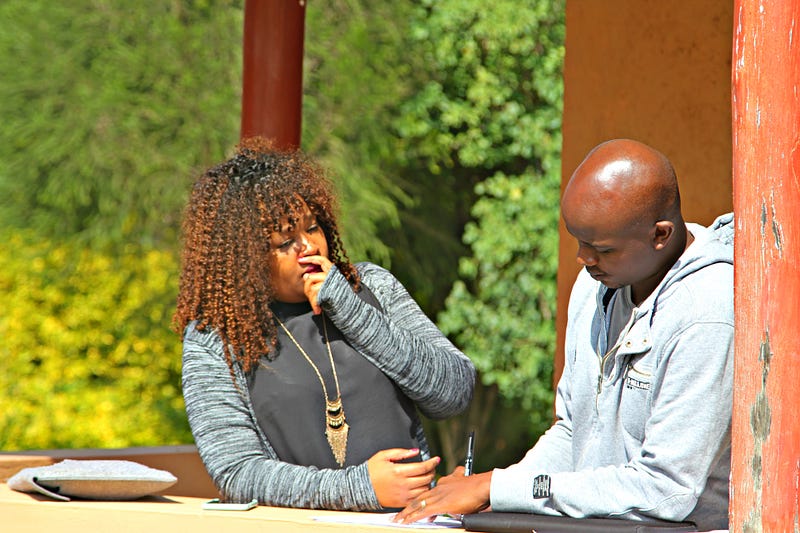
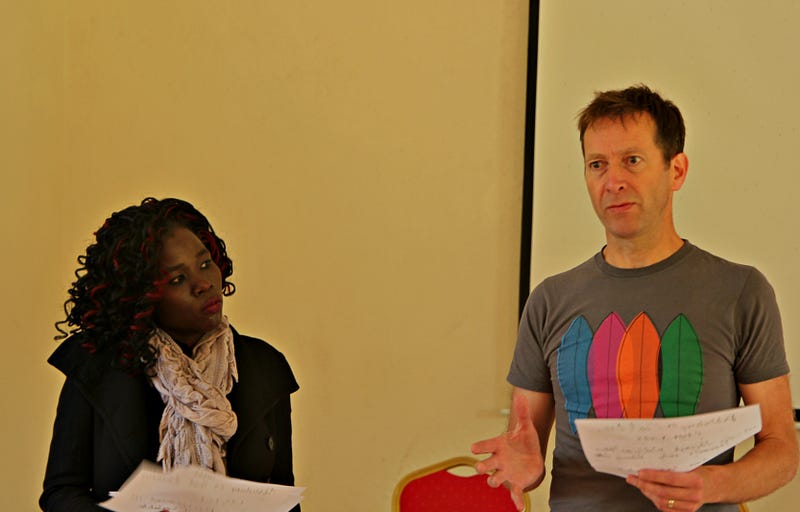
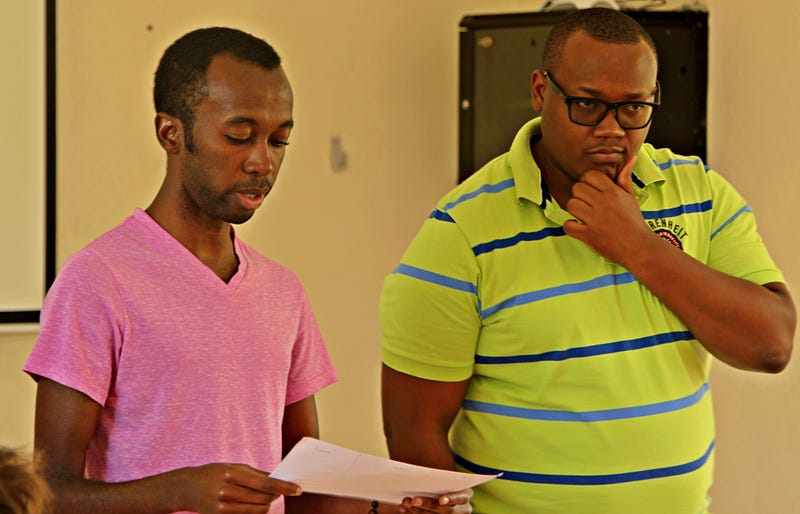
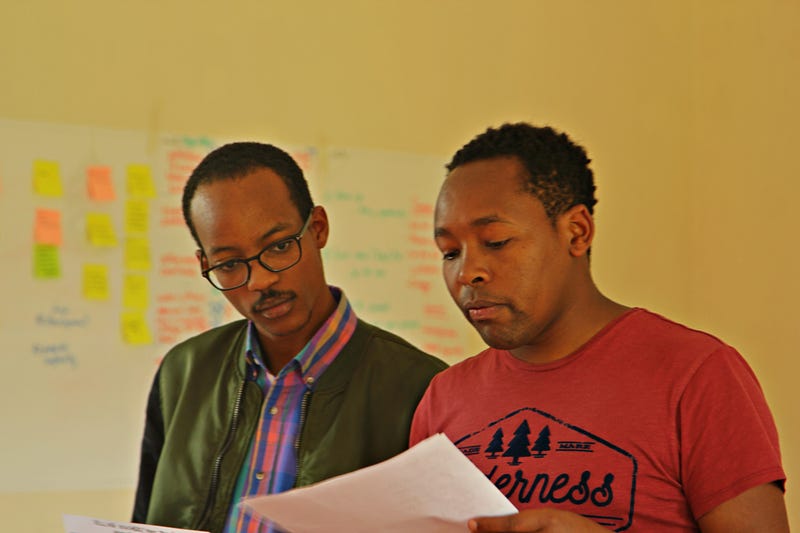
Once the pitches were over we did a speed critique of the ‘new’ products and ended up combining some of them. From there it was easy to decide on what we would be focusing on.
Next steps
Before we knew, the two days were over. We spent the last day thinking through the company culture. Unfortunately, we didn’t finish this on time but did enough for our CEO to build up on.
The product vision and strategy was pitched to the full Eneza team the week after the offsite session. The output was still high level and hard to act on and so the next exercise we are undertaking during our company retreat is developing the product roadmap.
As a product manager, this was a very critical exercise for me and I couldn’t be happier with the outcome.
Parting shot
During the evenings we had a bit of time to kick back and relax. We ended up going to the lakeside for an impromptu ‘photoshoot’. I will only share one photo.
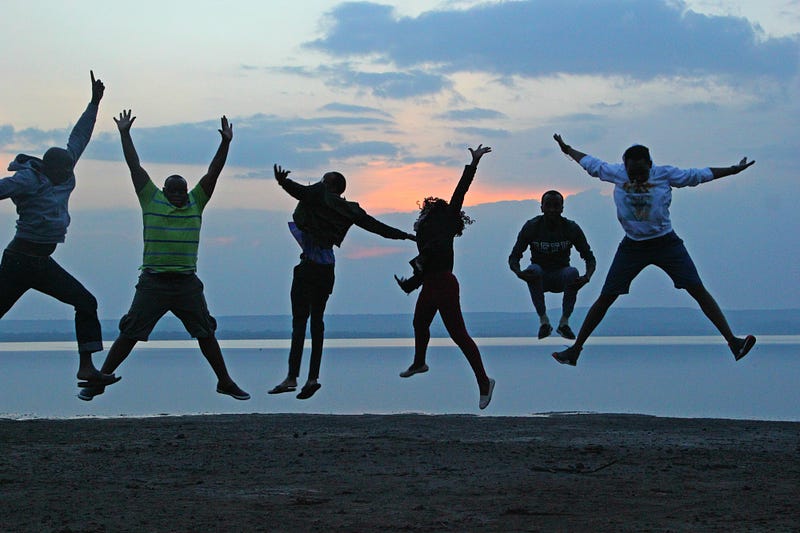
That is it for today’s post. I still have a long way to go before my efforts can truly bear fruits but it is a good start. What are your thoughts? If you have been in a similar situation, how did you approach this? Feel free to share your comments below or hit me up on Twitter @KiruiK.

